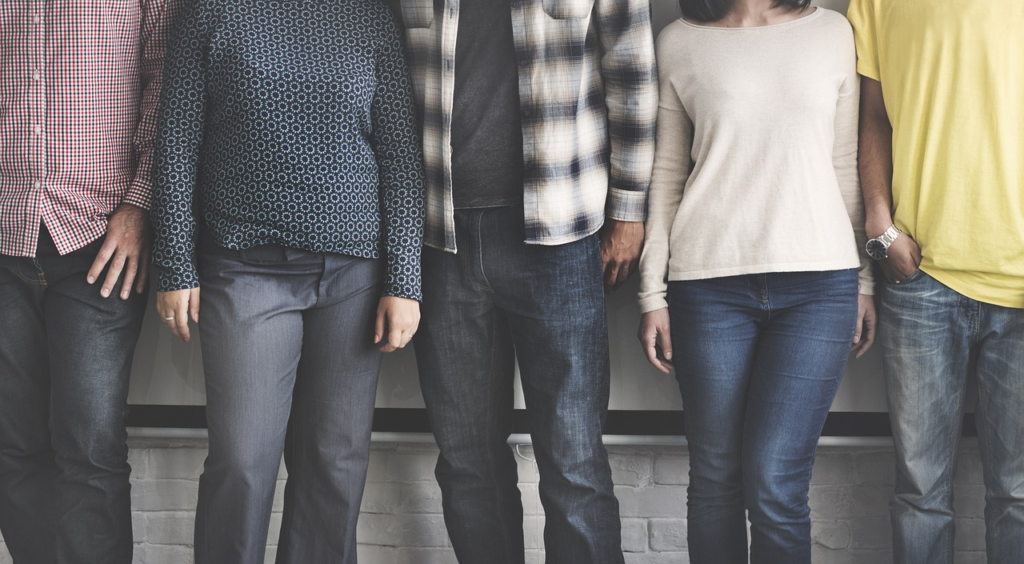- Calls to this hotline are currently being directed to Within Health, Fay or Eating Disorder Solutions
- Representatives are standing by 24/7 to help answer your questions
- All calls are confidential and HIPAA compliant
- There is no obligation or cost to call
- Eating Disorder Hope does not receive any commissions or fees dependent upon which provider you select
- Additional treatment providers are located on our directory or samhsa.gov
Breaking the Ties That Bind: Intervening on a Loved One in the Grips of ED – Part 1

The Basics of ED Intervention
The topic that I would like to cover today is: Breaking the Ties That Bind: Intervening on a Loved One in the Grips of an Eating Disorder.
Over the last ten years or so, the concept of intervention has become much more popular and reaching a much wider audience.
This is, in large part, due to television shows and social media that present what that’s all about.
We’re very grateful that the message has reached a wider audience and that this is available to assist families with a loved one that they’re concerned about.
Unfortunately, there have been some real downsides as well.
There are a lot of misconceptions about interventions.
For example, a lot of people think some guy just shows up one day and a few family members read a couple of letters and the person goes to treatment, or the person runs out of the room, and everyone chases them down the street.
That is not an accurate representation of what we do.
Trained and credentialed intervention professionals have a lot of education, a lot of expertise, and a lot of experience in this field and it is not something to be treated lightly.
I’d like to share with you some thoughts about intervention.
In fact, I’d like to cover with you the primary models of intervention that are currently being practiced in the United States as well as a model that I developed that I believe incorporates the best aspects of each of these.
We absolutely believe that intervention is the first step to recovery from eating disorders.
An intervention is not therapy; it is about breaking that cycle and helping someone make a choice to receive help.
We believe in guiding the family compassionately. It’s never about judgment and criticism.
We believe in managing the circumstances through experience.
Finally, we believe in helping the individual reach out for recovery.
It’s their choice but the rest of the family can make choices as well, and we’ll get into that in more detail.
There are a lot of myths about eating disorders, and I can’t possibly go over all of them.
However, one of them I’d like to talk about in particular is the belief that your loved one must hit bottom in order to accept help.
I understand the power and the value of hitting bottom. What I don’t agree with is when a dirty four-letter word is introduced into the equation: wait.
“We must wait for them to hit bottom.”
 Now hold on. If we have a loved one that’s truly in the grips of this disease or disorder and it is evident that this has the potential to be lethal or fatal, what are we waiting for?!
Now hold on. If we have a loved one that’s truly in the grips of this disease or disorder and it is evident that this has the potential to be lethal or fatal, what are we waiting for?!
An intervention steps in to bring the bottom up to hit the individual rather than waiting for the individual to hit bottom.
Either way, a bottom is reached, and we encourage and assist that individual in reaching out for help.
The truth is, eating disorders are chronic, progressive and fatal diseases when left unchecked.
Then, of course, they are diseases of denial. Denial is at the very core of ED. ED wants the victim to believe that they don’t have it and we often say that these diseases are the only diseases on earth that tell their victims they don’t have it.
An intervention is a starting point for change.
I’d like to share a little bit about what we believe eating disorders are all about.
We believe they are bio-psycho-social-spiritual diseases or disorders.
If you’re uncomfortable with the word “disease,” you can use the word disorder.
What matters to me is giving that individual some help at the biological level.
The disease, or disorder, is primarily neurological. Of course, there’s a lot of physiological damage going on but the actual disease process is neurological, and that’s got to be addressed in treatment.
Then there’s the psychological aspect, all those bizarre behaviors that accompany an eating disorder.
There’s the social side as well. Often people in the grips of these diseases withdraw, isolate, and pull away from the most meaningful people in their lives, and they begin to associate with other people who do the same thing they do.
Finally, there’s the spiritual aspect.
I’m not referring to religion, per se. I’m talking about the mind-body connection.
I’m talking about who we are on the inside, our values, our morals, and so forth.
All of that gets impacted, so, eating disorders are not like a head cold. You can’t give it a couple of weeks to run its course.
Unlike a broken bone, put a cast on it and in six weeks it’s good as new, these diseases are monsters, and they attach themselves to a person at all of these levels, and all of these levels need to be looked at.
Primarily, the point I want to make is why sitting your loved one down and wanting to have a rational, reasonable, logical conversation about the disorder very often is ineffective.
 While that individual is in the grips of an illogical, unreasonable, and irrational disease or disorder, it does take a different approach.
While that individual is in the grips of an illogical, unreasonable, and irrational disease or disorder, it does take a different approach.
As I mentioned, there are different intervention protocols currently being practiced throughout the country.
I’d like to introduce you to four of them.
The first is called “A.R.I.S.E.” This is an acronym for A Relational Intervention Sequence (for) Engagement.
Second is the Family Systems, which is an educational seminar.
Both of these approaches are “Invitational.”
In other words, there is no surprise. From the very beginning, the affected individual is invited to be part of the process.
There are a couple of other models that are not invitational, for example, the Nouthetic Model, which is biblical and confrontational, and the Johnson Institute Model, which is the model that most people are familiar with.
This is the model where the individual is asked to a meeting, they’re unaware of what they’re walking into, and the family is together to share their love care and concern.
I’d like to spend a bit of time on all four of these models in the coming articles and then talk about the model that I’ve developed, which I believe takes advantage of the best of each of these models.
Source:
Virtual Presentation by Jerry L. Law, D. Min., MDAAC, CIP in the Dec. 7, 2017 Eating Disorder Hope Inaugural Online Conference & link to the press release at https://www.prnewswire.com/news-releases/eating-disorder-hope-offers-inaugural-online-conference-300550890.html
 About the Presenter:
About the Presenter:
Jerry L. Law, D. Min., MDAAC, CIP is a veteran of 25 years in the corporate world, and his strong leadership and organizational skills lend themselves naturally to the intervention process. Dr. Law is a Board Certified Professional Christian Counselor, a Board Certified Intervention Professional and a Master Certified Drug Alcohol and Addictions Counselor. Jerry brings compassion and a first-hand understanding of how critical it is to break the cycle of addiction in the professional world as well as within the family.
 About the Transcript Editor: Margot Rittenhouse is a therapist who is passionate about providing mental health support to all in need and has worked with clients with substance abuse issues, eating disorders, domestic violence victims, and offenders, and severely mentally ill youth.
About the Transcript Editor: Margot Rittenhouse is a therapist who is passionate about providing mental health support to all in need and has worked with clients with substance abuse issues, eating disorders, domestic violence victims, and offenders, and severely mentally ill youth.
As a freelance writer for Eating Disorder and Addiction Hope and a mentor with MentorConnect, Margot is a passionate eating disorder advocate, committed to de-stigmatizing these illnesses while showing support for those struggling through mentoring, writing, and volunteering. Margot has a Master’s of Science in Clinical Mental Health Counseling from Johns Hopkins University.
The opinions and views of our guest contributors are shared to provide a broad perspective of eating disorders. These are not necessarily the views of Eating Disorder Hope, but an effort to offer a discussion of various issues by different concerned individuals.
We at Eating Disorder Hope understand that eating disorders result from a combination of environmental and genetic factors. If you or a loved one are suffering from an eating disorder, please know that there is hope for you, and seek immediate professional help.
Published on June 26, 2018.
Reviewed on June 26, 2018 by Jacquelyn Ekern, MS, LPC
Published on EatingDisorderHope.com

The EatingDisorderHope.com editorial team comprises experienced writers, editors, and medical reviewers specializing in eating disorders, treatment, and mental and behavioral health.

